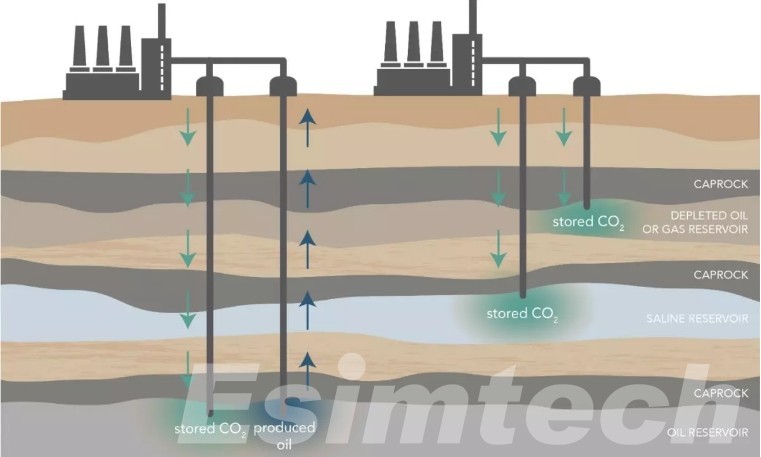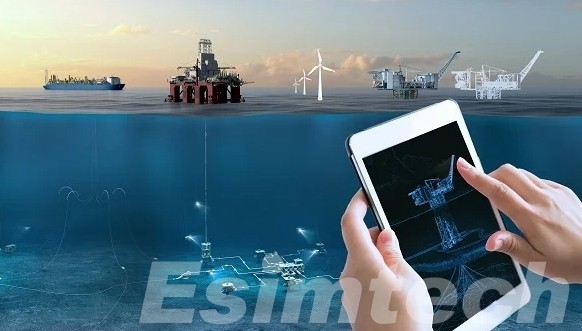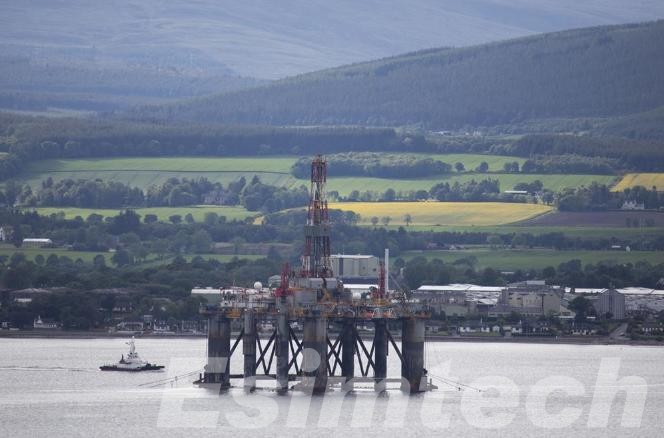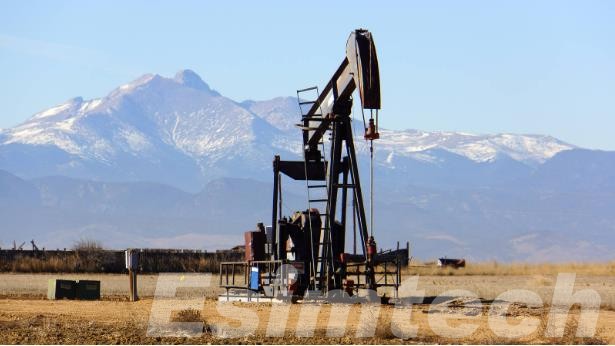How to Address the Climate Change in the Oil and Gas Industry
As the cornerstone of the global energy infrastructure, the oil and gas industry faces extraordinary challenges in the face of climate change. The industry, traditionally associated with high carbon emissions and environmental degradation, is now under increasing pressure to reduce its carbon footprint and adapt to a sustainable, low-carbon future. Rising temperatures, extreme weather events, and the growing threat of irreversible environmental damage have sparked a global call for cleaner, more sustainable energy.
The Growing Pressures of Climate Change on Oil and Gas

The oil and gas industry is responsible for a significant portion of global carbon emissions, accounting for about 42% of industrial CO₂ emissions. As climate change becomes an existential threat, governments, regulators, investors, and the public are calling for swift action to decarbonize the sector. This pressure has led to increased scrutiny, from tighter emissions regulations to investor activism demanding cleaner operations and more sustainable practices. The rise of environmental, social, and governance (ESG) standards has also placed additional demands on companies to demonstrate their commitment to reducing environmental impacts.
Simultaneously, oil and gas companies are navigating the economic risks of climate change, including the potential for stranded assets and reduced profitability as the world transitions toward cleaner energy sources. Yet, the sector is not sitting idle. It is responding to these challenges by adopting innovative technologies and shifting its operational paradigms.
Key Innovations Addressing Climate Change in the Oil and Gas Industry
As the oil and gas industry faces increasing pressure to reduce its environmental impact, several key innovations are emerging to address climate change. These innovations span from advanced carbon capture techniques to the incorporation of digital tools, renewable energy investments, and the adoption of hydrogen as a clean energy source. Below is a detailed breakdown of each of these innovations.
Reducing Emissions through Carbon Capture

One of the most significant innovations in reducing emissions is the development of carbon capture, utilization, and storage (CCUS) technologies. These systems prevent carbon dioxide from entering the atmosphere, effectively mitigating the carbon footprint of oil and gas activities.
- Types of Carbon Capture:
- Post-combustion capture: Captures CO2 after fossil fuels have been burned.
- Pre-combustion capture: Involves converting fossil fuels into a mix of hydrogen and CO2 before combustion.
- Direct air capture (DAC): Extracts CO2 directly from the air.
- Utilization and Storage:
- CO2 can be stored underground in geological formations.
- It can also be used in industrial processes, such as enhanced oil recovery (EOR), or in producing synthetic fuels.
Enhancing Efficiency through Digitalization

Digitalization is another critical innovation transforming the oil and gas industry by improving efficiency and reducing environmental impact. By using advanced technologies like artificial intelligence, IoT, and data analytics, companies can optimize their operations and cut unnecessary energy use and emissions.
- Artificial Intelligence (AI): Predicts equipment failures, preventing operational disruptions and reducing emissions.
- Internet of Things (IoT): Provides real-time data from equipment and pipelines, enabling quick detection of leaks or inefficiencies.
- Digital Twins: Virtual models of physical assets that allow companies to simulate different operational scenarios and improve system performance.
- Predictive Maintenance: Uses data analytics to predict equipment maintenance needs, reducing waste and avoiding potential environmental hazards.
These digital tools help the industry reduce emissions, improve productivity, and extend the life of critical infrastructure while making operations safer and more sustainable.
Shifting Toward Renewable Energy Sources

The oil and gas industry is increasingly investing in renewable energy as part of its transition towards sustainability. Many companies are diversifying their portfolios by incorporating wind, solar, and bioenergy into their energy mix.
- Wind and Solar Farms: Major oil companies are investing in large-scale renewable energy projects to reduce reliance on fossil fuels.
- Biofuels: Developing bioenergy sources from organic materials that emit fewer greenhouse gases than traditional fossil fuels.
- Hybrid Platforms: Combining oil and gas production facilities with offshore wind farms to reduce the carbon footprint of operations.
- Electric Vehicle Infrastructure: Expanding into the electric vehicle market by investing in charging stations and battery technologies.
By investing in renewable energy, the industry not only diversifies its revenue streams but also reduces its carbon emissions and aligns with global climate goals.
The Role of Hydrogen in a Low-Carbon Future
Hydrogen is emerging as a promising energy source in the transition to a low-carbon future, and the oil and gas industry is playing a key role in developing this clean energy carrier. Hydrogen, especially when produced using low-carbon methods, is seen as a major player in reducing emissions in heavy industries and transportation sectors.
Key aspects of hydrogen development:
- Grey Hydrogen: Produced from natural gas without carbon capture, it’ s still widely used today.
- Blue Hydrogen: Produced from natural gas with CCUS, offering a lower-emission alternative.
- Green Hydrogen: Produced via electrolysis powered by renewable energy, representing the cleanest form of hydrogen.
- Hydrogen Infrastructure: Oil and gas companies are investing in hydrogen infrastructure to develop its use in industrial applications and transportation.
By capitalizing on existing expertise in energy production, the oil and gas sector is uniquely positioned to scale up hydrogen production, helping drive the global transition to cleaner energy.
These innovations represent the oil and gas industry’ s commitment to addressing climate change. By focusing on carbon capture, digitalization, renewable energy, and hydrogen, the sector is positioning itself as an essential contributor to a more sustainable and low-carbon future.
Collaboration Between Oil and Gas and Environmental Organizations

The oil and gas industry, often seen as a major contributor to climate change, has increasingly recognized the need to collaborate with environmental organizations to find sustainable solutions. These partnerships have led to a range of initiatives, including:
- Joint Research and Development: Oil and gas companies and environmental organizations have joined forces to invest in research and development projects focused on reducing greenhouse gas emissions, improving energy efficiency, and developing new clean technologies.
- Shared Knowledge and Best Practices: By sharing information and best practices, these organizations can learn from each other and identify innovative approaches to addressing environmental challenges.
- Public Advocacy: Collaboration between oil and gas companies and environmental organizations can help to build public support for climate action and promote the adoption of sustainable practices.
- Regulatory Reform: By working together, these organizations can advocate for policies and regulations that support a transition to a low-carbon economy.
Examples of Collaboration
One example of successful collaboration is the Oil and Gas Climate Initiative (OGCI), a global CEO forum that brings together leading oil and gas companies to address climate change. The OGCI has launched several initiatives, including the Climate Investment Initiative, which aims to invest $1 billion in climate-related technologies.
Another example is the partnership between BP and the World Wildlife Fund (WWF). This collaboration has led to the development of a range of initiatives, such as the Sustainable Palm Oil Initiative, which aims to promote the production of palm oil in a way that protects biodiversity and reduces greenhouse gas emissions.

These partnerships demonstrate that it is possible for oil and gas companies and environmental organizations to work together to find solutions to climate change. By building trust, sharing knowledge, and investing in innovative technologies, these organizations can help to create a more sustainable future.
Challenges in Implementing Innovations in the Oil and Gas Industry
Despite the great potential of various innovations, their implementation in the oil and gas industry faces several significant challenges.
- High Upfront Costs: Many innovative technologies, such as carbon capture and storage or renewable energy projects, require substantial initial investments. These costs can be prohibitive for companies facing economic pressures or uncertain regulatory environments.
- Regulatory Hurdles: The oil and gas industry operates within a complex regulatory framework that can hinder the adoption of new technologies. Obtaining permits, complying with environmental standards, and navigating regulatory uncertainties can be time-consuming and expensive.
- Technological Limitations: While innovations offer great promise, they may not be fully developed or commercially viable at the necessary scale. Technical challenges, such as energy storage limitations or infrastructure constraints, can limit the immediate impact of these technologies.
- Infrastructure Challenges: Integrating new technologies into existing oil and gas infrastructure can be complex and costly. Upgrading pipelines, refining facilities, and other infrastructure components may be necessary to accommodate renewable energy sources or carbon capture systems.

- Industry Culture and Risk Aversion: The oil and gas industry has traditionally been risk-averse and focused on proven technologies. Introducing new innovations can disrupt established practices and create uncertainty, making it difficult for companies to justify the associated risks.
- Talent and Skills Gap: The transition to a low-carbon future requires a skilled workforce with expertise in new technologies and sustainability practices. However, there may be a shortage of qualified professionals, particularly in developing countries.
Overcoming these challenges will require a concerted effort from industry leaders, governments, and investors. By addressing the upfront costs, streamlining regulatory processes, supporting research and development, and investing in talent development, the oil and gas industry can accelerate the adoption of innovative solutions and contribute to a more sustainable future.
The Path Forward for Oil and Gas Innovation
The future of the oil and gas industry will depend on its ability to continue innovating and adapting to the changing energy landscape. By investing in research and development, collaborating with stakeholders, and embracing new technologies, the industry can play a vital role in addressing climate change while ensuring a sustainable future.
